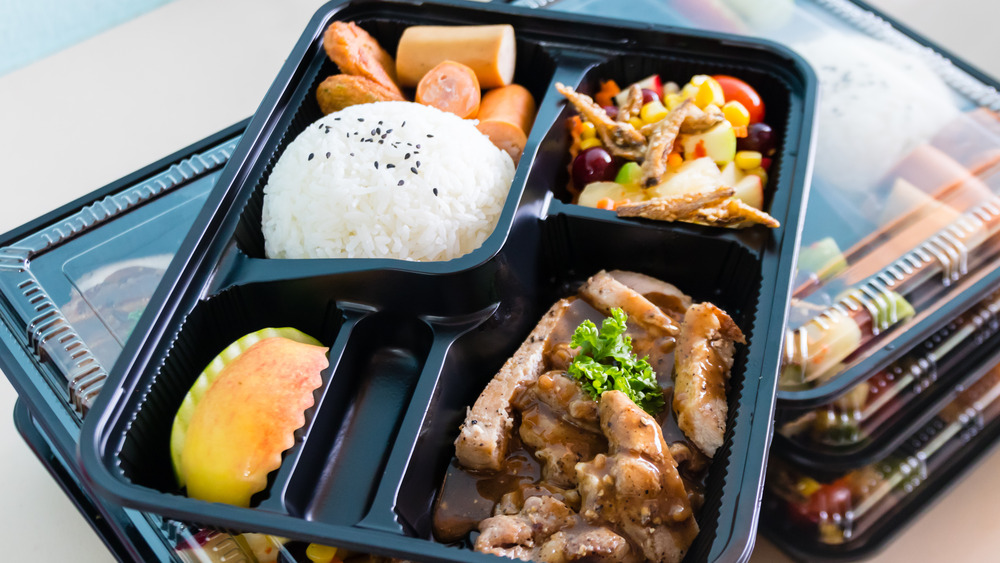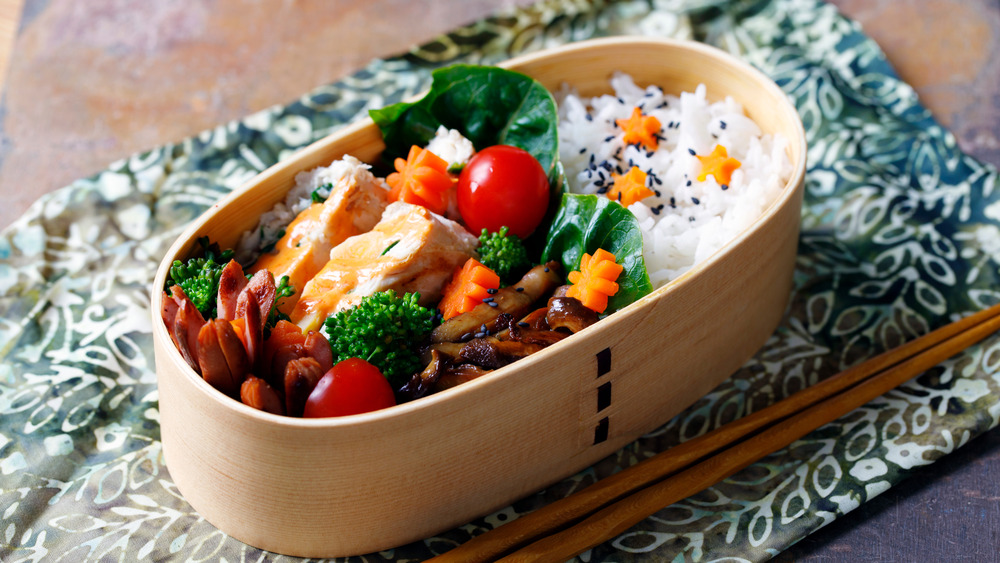This Is What You Will Find In A Traditional Bento Box
A packed meal isn't just a packed meal — particularly if you throw a Japanese bento box into the mix. These artfully designed boxes are a tribute to Japanese ingenuity not just because they are easy on the eyes, but because when done well, the meal actually represents a balance of food groups, textures, tastes, and colors (via Gurunavi). Bringing a bento from home first became a thing during the Kamakura era in 12th century Japan, when workers began packing dried rice which could be eaten as it was, or brought back to life with a bit of boiled water.
The boxes then got a major upgrade in the 1500's and the Azuchi-Momoyama period, when lacquer boxes were to carry the food in place of a humble cloth bag. Succeeding periods in Japanese history saw changes in the contents and the design of the carrying cases for these takeout meals, but the bento box as we know it today really came into its own in the 1980's. This is when convenience stores began to take over Japan's fast-moving retail landscape and the introduction of the microwave oven became a game-changer (via All About Japan).
Not all bento boxes are made the same way
While the contents of a bento can usually be broken down into two parts rice, one part protein, and two half portions veggies plus fruit (via Bokksu), what sets one bento apart from the other lies in how the food is cooked and presented. Guruanvi presents no less than six different kinds of bento boxes based solely on presentation, from the more common makunouchi bento to the cutesy and Instagrammable kyaraben bento, featuring food items dressed up to look like characters out of a TV show or manga.
Most bento boxes come with rice (usually short grain), although noodles can be used as a carb instead. Rice, which we all know can be a bit bland, can be perked up with black sesame seeds, or a dry seasoning known as furikake (think an "Everything but the bagel" type seasoning, but made with sesame seeds, nori, salt, sugar, and options like bonito flakes, chili flakes and miso powder, per Feasting at Home). The boxes also come with protein that can be anything from battered shrimp or ebifurai to fried chicken or grilled fish, while the vegetable sides are pickled, cooked, or put in a salad prepared with sesame dressing.

